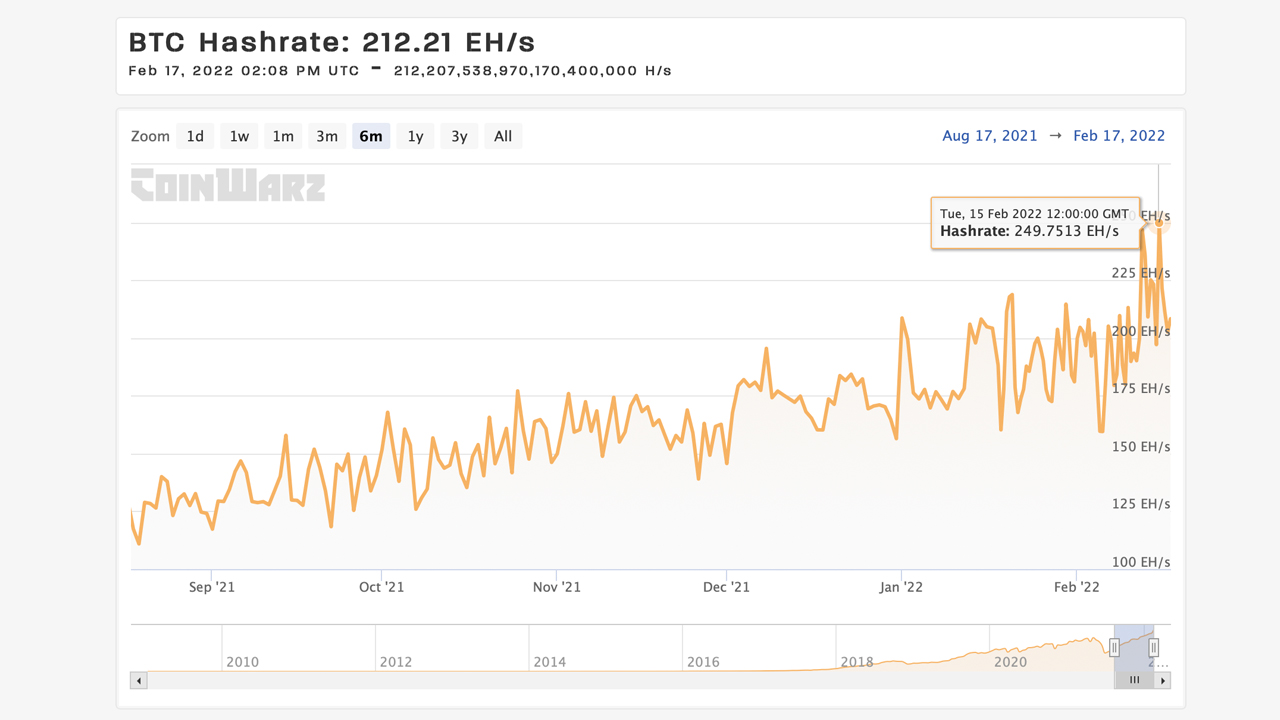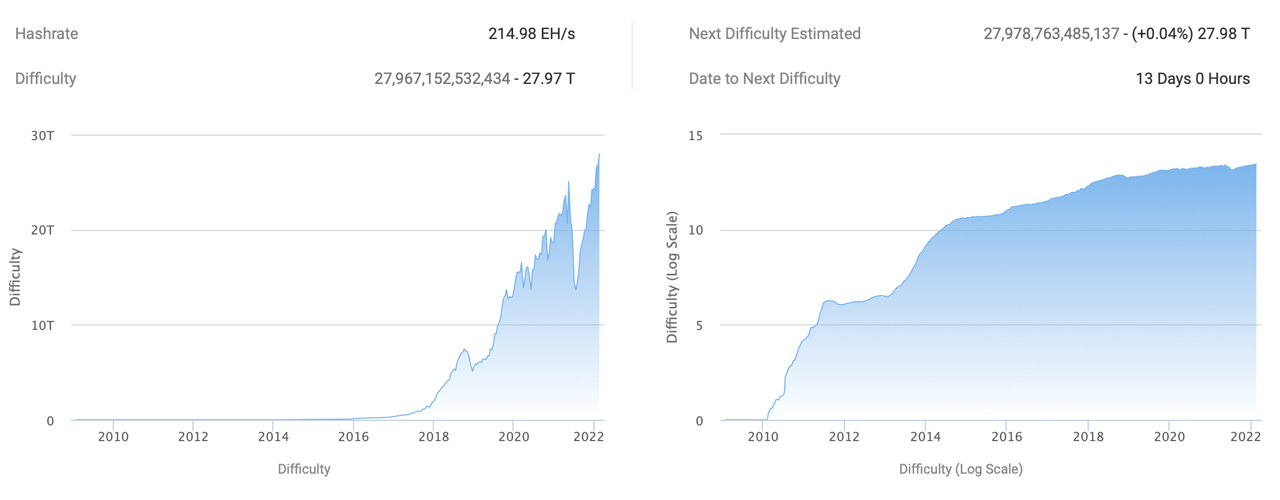
The processing power backing the Bitcoin network has continued its upward momentum tapping another all-time high (ATH) on February 15, 2022, at 249 exahash per second (EH/s). Following the latest ATH, the network’s mining difficulty increased on Thursday morning (EST), up 4.78% and reaching a value of 27.97 trillion. The mining difficulty has increased six times in a row since November 28, 2021, which makes it 23.34% harder for bitcoin miners to find bitcoin block rewards since then.
Bitcoin Hashrate Cracks Another ATH, Block Rewards Become Much Harder to Find After Difficulty Jumps Close to 5% Higher
At the time of writing, the Bitcoin network’s hashrate is coasting along at 212.21 EH/s after cracking a new ATH on Tuesday, February 15. On that day, the hashrate climbed to 249.75 EH/s, according to coinwarz.com’s six-month statistics. The new ATH follows the high recorded three days prior when the hashpower metric tapped 246 exahash per second (EH/s) on February 12. After the new 249 EH/s high on Thursday, the network’s difficulty increased by 4.78% to another lifetime high.

At the time of writing and for the next 13 days, the mining difficulty will be approximately 27.97 trillion. It’s a lot higher than the low difficulty value recorded 215 days (seven months) ago on July 17, 2021. At that time, BTC’s network difficulty was only 13.67 trillion because it experienced four decreases in a row — one of them being the largest decrease in history on July 3, 2021 (-27.94%).

However, since July 17, there have been 16 different difficulty adjustment algorithm (DAA) changes and 15 of them increased. The last decrease recorded in the seven-month spread was on November 28, 2021, dropping 1.49%. The jump from 13.67 trillion to the current 27.97 trillion is an increase of 104.60% in seven months. The hashrate seven months ago was less than half the value it is today, at 97.87 EH/s.
While bitcoin miners have recorded another ATH, the top pool during the last three days is Foundry USA with 15.59% of the global hashrate and 33.62 EH/s. The second-largest miner during the last three days is F2pool with 14.76% of the world’s hashrate and 31.83 EH/s. Foundry USA and F2pool are followed by Antpool, Poolin, Binance Pool, Viabtc, Slushpool, Btc.com, SBI Crypto, and Luxor, respectively.
There are 12 entities dedicating hashrate to the BTC chain and 11 of them are known pools. Currently, unknown hashrate or stealth miners have the least amount of hashrate with 0.83% of the global hashrate, or 1.79 EH/s of dedicated SHA256 hashpower.
With the current global hashrate coasting along above the 200 EH/s range, the next epoch DAA estimated to come in 13 days is currently expected to be another increase. While the estimate could change, right now it’s expected to jump 0.04% from the current 27.97 trillion to 27.98 trillion.
What do you think about the hashrate reaching new highs and the difficulty increasing close to 5% on Thursday? Let us know what you think about this subject in the comments section below.
Image Credits: Shutterstock, Pixabay, Wiki Commons
Disclaimer: This article is for informational purposes only. It is not a direct offer or solicitation of an offer to buy or sell, or a recommendation or endorsement of any products, services, or companies. Bitcoin.com does not provide investment, tax, legal, or accounting advice. Neither the company nor the author is responsible, directly or indirectly, for any damage or loss caused or alleged to be caused by or in connection with the use of or reliance on any content, goods or services mentioned in this article.
Read disclaimer


